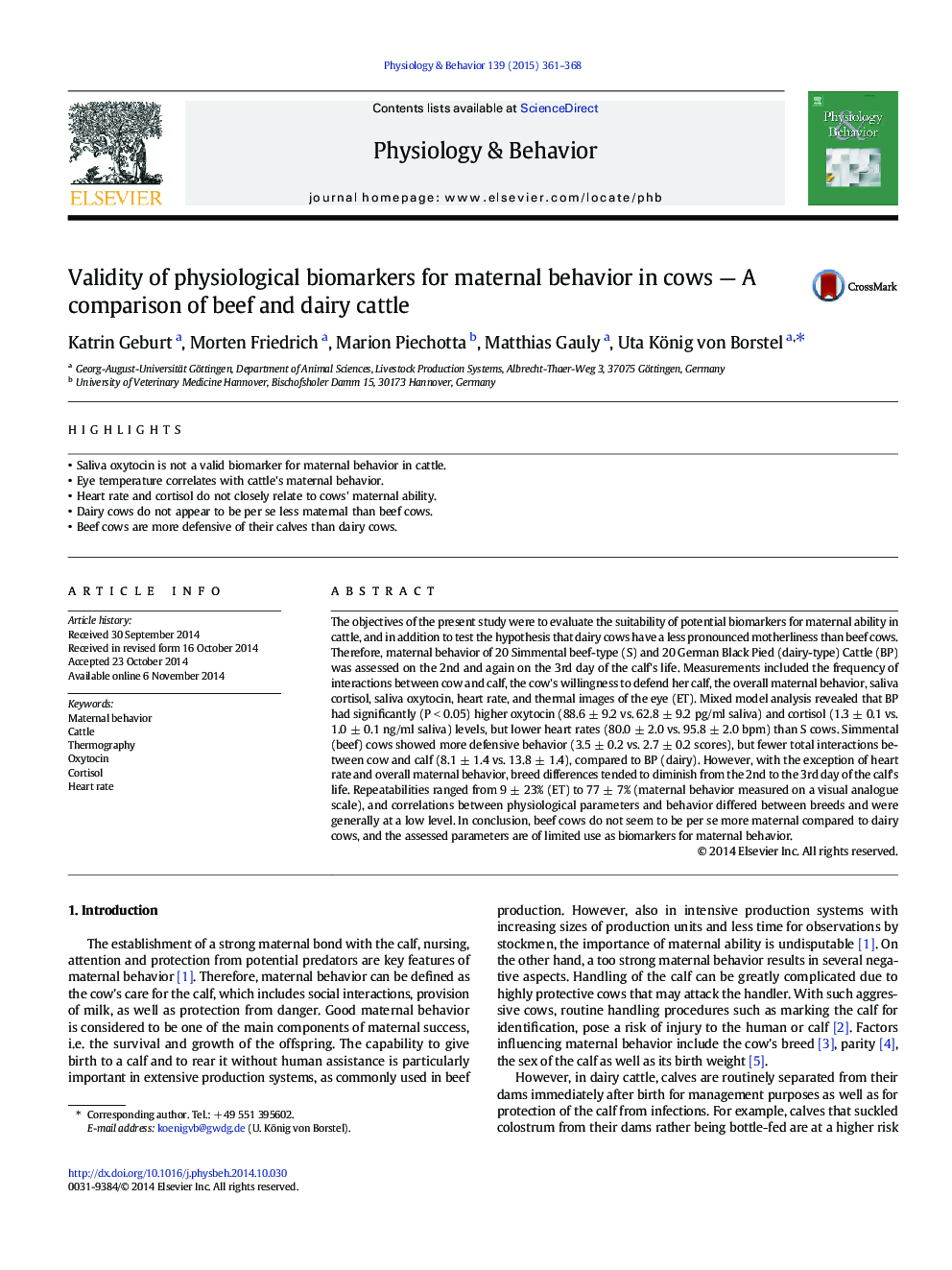| Article ID | Journal | Published Year | Pages | File Type |
|---|---|---|---|---|
| 5923981 | Physiology & Behavior | 2015 | 8 Pages |
â¢Saliva oxytocin is not a valid biomarker for maternal behavior in cattle.â¢Eye temperature correlates with cattle's maternal behavior.â¢Heart rate and cortisol do not closely relate to cows' maternal ability.â¢Dairy cows do not appear to be per se less maternal than beef cows.â¢Beef cows are more defensive of their calves than dairy cows.
The objectives of the present study were to evaluate the suitability of potential biomarkers for maternal ability in cattle, and in addition to test the hypothesis that dairy cows have a less pronounced motherliness than beef cows. Therefore, maternal behavior of 20 Simmental beef-type (S) and 20 German Black Pied (dairy-type) Cattle (BP) was assessed on the 2nd and again on the 3rd day of the calf's life. Measurements included the frequency of interactions between cow and calf, the cow's willingness to defend her calf, the overall maternal behavior, saliva cortisol, saliva oxytocin, heart rate, and thermal images of the eye (ET). Mixed model analysis revealed that BP had significantly (P < 0.05) higher oxytocin (88.6 ± 9.2 vs. 62.8 ± 9.2 pg/ml saliva) and cortisol (1.3 ± 0.1 vs. 1.0 ± 0.1 ng/ml saliva) levels, but lower heart rates (80.0 ± 2.0 vs. 95.8 ± 2.0 bpm) than S cows. Simmental (beef) cows showed more defensive behavior (3.5 ± 0.2 vs. 2.7 ± 0.2 scores), but fewer total interactions between cow and calf (8.1 ± 1.4 vs. 13.8 ± 1.4), compared to BP (dairy). However, with the exception of heart rate and overall maternal behavior, breed differences tended to diminish from the 2nd to the 3rd day of the calf's life. Repeatabilities ranged from 9 ± 23% (ET) to 77 ± 7% (maternal behavior measured on a visual analogue scale), and correlations between physiological parameters and behavior differed between breeds and were generally at a low level. In conclusion, beef cows do not seem to be per se more maternal compared to dairy cows, and the assessed parameters are of limited use as biomarkers for maternal behavior.
